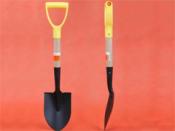Search
Login
Expanded polystyrene and thermal insulation in the house, do-it-yourself polystyrene insulation.
The requirements for thermal insulation and energy saving are growing every day, moreover, not only the requirements are growing, but also the prices for energy carriers. In such a situation, it is important to warm your apartment, garage or country house as efficiently as possible. There are plenty to choose from in the construction market.
Table of contents
- The main types of insulation
- Thermal insulation with expanded polystyrene foam video
- Extruded Styrofoam
- Criteria for choosing a heater video
The main types of insulation
On the market there are many different modern, universal, high-tech and many more varieties of insulation. Such an assortment of products can stupor even an experienced builder. The choice of insulation is a crucial step, because the wrong decision leads to a change in the thermal characteristics of the building with all the ensuing consequences. It must be understood that there is neither bad nor good insulation, as there is no universal. For each purpose, there is a type of insulation that is most suitable in a given situation. Consider the main types of insulation.
Polystyrene foam the material is obtained by foaming polystyrene. The polymer mass is filled with gas and heated with water vapor, due to which there is a multiple increase in the volume of polystyrene and sintering of the granules of the material. In the following operations, the volume of material is cut into the desired size.
Extruded Styrofoam made from the same polystyrene material, but the production technology is different. The material is obtained by extrusion. It has great rigidity and high compressive strength.
Glass wool the most common insulation of the late 20th century. One of the types of mineral wool. In production, as the name implies, ordinary glass is used as glass waste. The use of this material is limited through negative effects on the human body. Glass wool fibers are very brittle and easily penetrate the eyes, lungs and through clothing into the skin of a person. When working with it, you need to follow increased security measures. In modern production, staple fiberglass is used.

Stone wool made from volcanic rocks. The basis of stone wool is basalt fiber. The use of this material provides a fire resistance limit of 1000C.

Polyurethane foam or foam is an inert gas filled plastic. Polyurethane foam has low vapor permeability and thermal conductivity (0.019 0.03 W / mK). In construction, due to the high coefficient of adhesion, polyurethane foam can be applied to various surfaces.

Natural natural heaters Among them are mats made from natural flax and hemp, as well as ecowool, finely chopped cellulose (paper, sawdust). Sometimes straw and reeds are used.

Thermal insulation with expanded polystyrene foam
Expanded polystyrene (polystyrene) has established itself as a heat- sound- and noise-insulating material more than 50 years ago. It has a low specific gravity (15-30 kg / m3), has good vapor permeability of 0.05 Mg / (m * h * Pa) and low thermal conductivity of 0.029-0.034 W / mK. It is widely used in the construction industry for:
- insulation of walls of houses;
- roof insulation;
- floor insulation;
- thermal insulation of foundations;
- pipe insulation.

An important condition when using this material is its external finish and protection from sunlight. Under the influence of ultraviolet, the granules of the foam are destroyed.
Extruded Styrofoam
Extruded polystyrene foam, as well as its counterpart, is widely used in the construction industry. It has a higher specific gravity of 35-50 kg / m3, resulting in a decrease in vapor permeability of 0.013 Mg / (m * h * Pa). Reducing this parameter increases the requirements for the ventilation system.
This material is used as an element of fixed formwork during the construction of monolithic frame housing. Polystyrene concrete, which is used for the construction of partitions, laying warm floors, is gaining popularity. They produce blocks for low-rise construction and self-supporting walls.

Extruded polystyrene is widely used for the production of packaging materials, decorative elements, disposable tableware, as dielectrics in instrumentation, in the construction of roads and runways of airports, as pontoons and beacons, light boats, in the manufacture of furniture and sewing clothes.

Criteria for choosing a heater
When choosing a foam as a heater, it should be borne in mind that it is destroyed under the influence of some technical substances: benzene, alcohol, acetone, dichloroethane.
Foam is also found on the Russian market, which is prohibited for use in the construction industry. This is the so-called urea-formaldehyde foam or its varieties.

The use of high-quality material during construction will significantly reduce the cost of the construction itself. When insulating the walls with foam, it is possible to reduce the structural thickness of the walls, the cost of construction work, and to save energy in the heating season.
When insulating the roof due to the smallest weight among the insulating materials, it is possible to reduce the weight of the roofing cake, to provide good sound insulation metal roofing. When using extruded polystyrene, there is no need to use a vapor barrier film.
In high-quality foam, the granules should be evenly distributed. There should not be voids and dips. The granule size should be the same. When a foam sheet is broken, it should not collapse at the place of adhesion. The color of the foam, if no dyes have been used, should be snow-white. If there is a color change, this indicates poor-quality material.





